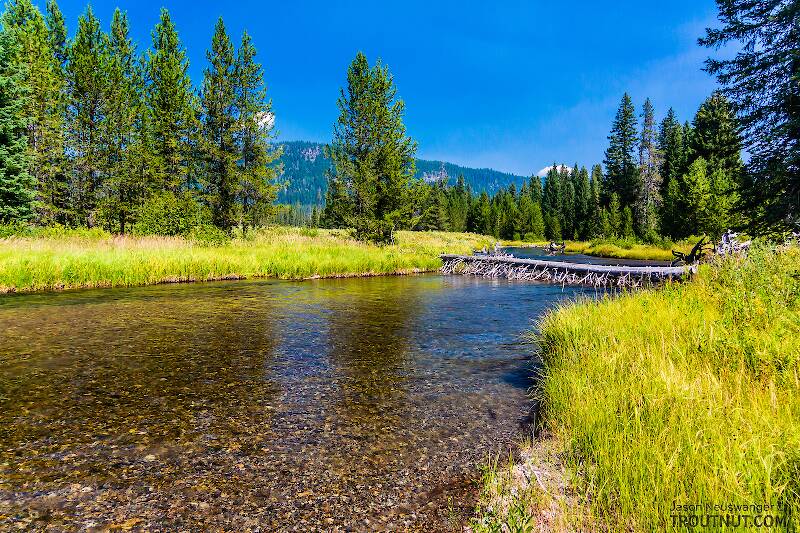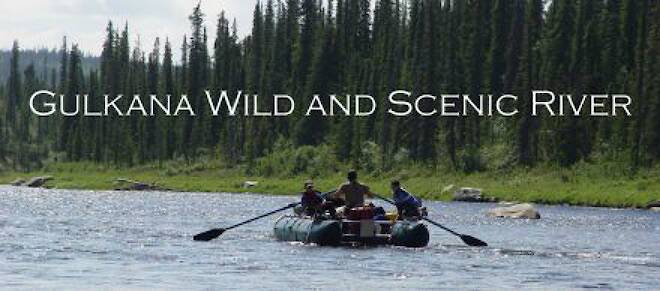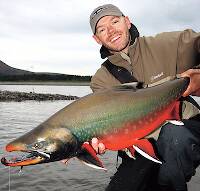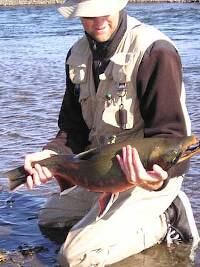
Blue-winged Olives
Baetis
Tiny Baetis mayflies are perhaps the most commonly encountered and imitated by anglers on all American trout streams due to their great abundance, widespread distribution, and trout-friendly emergence habits.
Featured on the forum

This is an interesting one. Following the keys in Merritt R.W., Cummins, K.W., and Berg, M.B. (2019) and Jacobus et al. (2014), it keys clearly to Ephemerella. Jacobus et al provide a key to species, but some of the characteristics are tricky to interpret without illustrations. If I didn't make any mistakes, this one keys to Ephemerella mucronata, which has not previously been reported any closer to here than Montana and Alberta. The main character seems to fit well: "Abdominal terga with prominent, paired, subparallel, spiculate ridges." Several illustrations or descriptions of this holarctic species from the US and Europe seem to match, including the body length, tarsal claws and denticles, labial palp, and gill shapes. These sources include including Richard Allen's original description of this species in North America under the now-defunct name E. moffatae in Allen RK (1977) and the figures in this description of the species in Italy.

Troutnut is a project started in 2003 by salmonid ecologist Jason "Troutnut" Neuswanger to help anglers and
fly tyers unabashedly embrace the entomological side of the sport. Learn more about Troutnut or
support the project for an enhanced experience here.
Northwestal on Dec 31, 2015December 31st, 2015, 10:34 am EST
Hi guys:
I just wanted to share great story from one of my clients ( Landon Mayer) that I thought you would enjoy.
"Northeast of Kotzebue, Alaska, are numerous drainages entering the Bering Sea with tributaries similar in size to walk-and-wade Western rivers. These great watersheds hold char up to 15 pounds and include the Wulik, Kivalina, and Noatak rivers. Their tributaries, including the Kelly River, Wrench Creek, and many others, also host runs of char. The area containing fishable water is vast.
There were four anglers on our trip. We spent approximately $2,200 per angler and landed about 15 to 25 char daily. The largest was 36 inches long and weighed 23 pounds."
We saw caribou and grizzlies during our stay. When camping in the Alaska backcountry, be mindful of your surroundings and take the proper food stowage and camp cleaning precautions to ensure a safe return home.
Read more: http://www.flyfisherman.com/canada/northwest-territories/lonesome-lands-arctic-char/#ixzz3vvsNTYR9
http://www.flyfisherman.com/canada/northwest-territories/lonesome-lands-arctic-char/
I just wanted to share great story from one of my clients ( Landon Mayer) that I thought you would enjoy.
"Northeast of Kotzebue, Alaska, are numerous drainages entering the Bering Sea with tributaries similar in size to walk-and-wade Western rivers. These great watersheds hold char up to 15 pounds and include the Wulik, Kivalina, and Noatak rivers. Their tributaries, including the Kelly River, Wrench Creek, and many others, also host runs of char. The area containing fishable water is vast.
There were four anglers on our trip. We spent approximately $2,200 per angler and landed about 15 to 25 char daily. The largest was 36 inches long and weighed 23 pounds."
We saw caribou and grizzlies during our stay. When camping in the Alaska backcountry, be mindful of your surroundings and take the proper food stowage and camp cleaning precautions to ensure a safe return home.
Read more: http://www.flyfisherman.com/canada/northwest-territories/lonesome-lands-arctic-char/#ixzz3vvsNTYR9
http://www.flyfisherman.com/canada/northwest-territories/lonesome-lands-arctic-char/
www.northwestalaska.net
www.gulkanaraftrental.com
www.gulkanaraftrental.com
Martinlf on Jan 1, 2016January 1st, 2016, 5:59 am EST
Cool story. It would be an adventure of a lifetime.
"He spread them a yard and a half. 'And every one that got away is this big.'"
--Fred Chappell
--Fred Chappell
Quick Reply
Related Discussions
Topic
Replies
Last Reply
1
Mar 31, 2008
by Lifeaquatic
by Lifeaquatic
Re: The last few days of winter are over... spring steelhead and browns get hot! 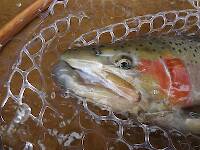

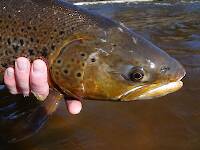
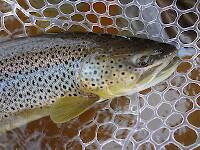
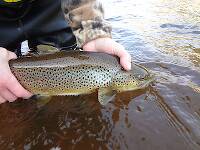
In the Photography Board by Pryal74
+ 7





In the Photography Board by Pryal74
11
Mar 16, 2012
by Pryal74
by Pryal74
Re: Does the extremely easily tied f-fly perform as well as the parachute adams?
In Fly Tying by Ffly
In Fly Tying by Ffly
25
Jun 15, 2016
by Flytyerinpa
by Flytyerinpa
2
Jan 29, 2011
by Pryal74
by Pryal74

